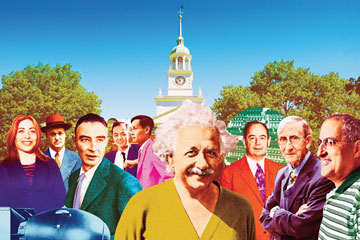
(6 of 6)
Playfulness is part of what the institute's director, Dijkgraaf, says he feels obligated to preserve. He's afraid that the appetite for funding research may be waning just when things are starting to get good. It's a pretty exciting time for science, particularly for cosmology and physics, where the discovery of the Higgs boson has brought us closer to understanding the origins of the universe. "Never in our history have we understood so much about where we are living, the planets, the universe. Never. It's the absolute high point, and then we turn off? I'm almost refusing to accept this," he tells me, his arms flailing Ichabod-like in the air.
For now, things at the institute hum along as they always have. In the time since I visited, Katz and his team of astrophysicists think they figured out why stars explode into a certain type of supernova--through a collision between two smaller stars called white dwarfs. It will be years before they convince the rest of the field that they are right. Where will it lead? It's hard to say. Recently, Katz's colleague investigated the possibility that their theory might explain Eta Carinae, a gorgeous star, which, if you Google it, you'll see looks a lot like an explosion from two colliding stars. The results show that their discovery probably does not explain that particular collision, but it may explain others. As we go over the possibilities, he says, "Use your imagination."
